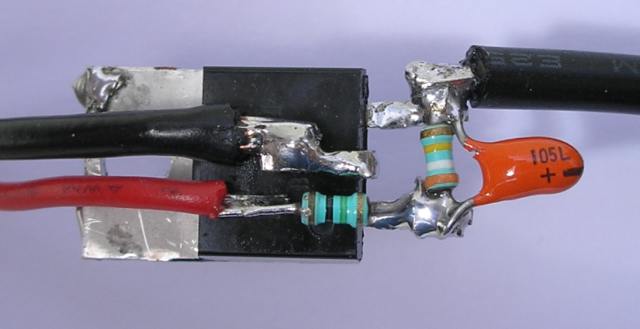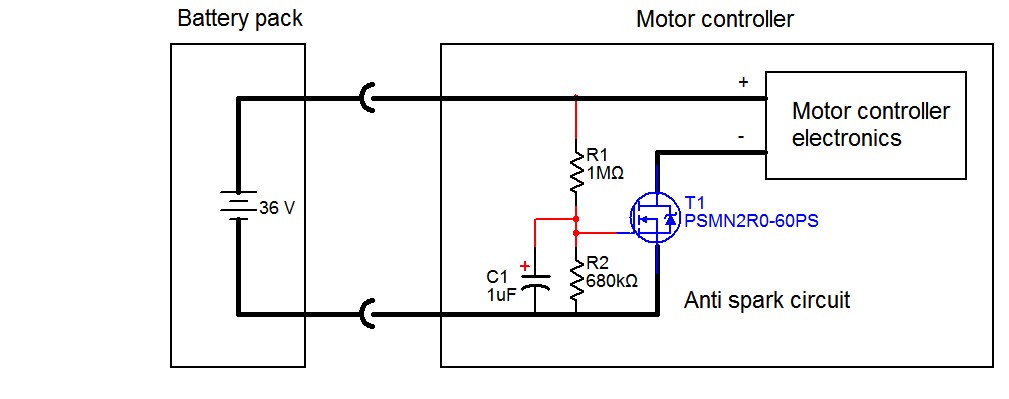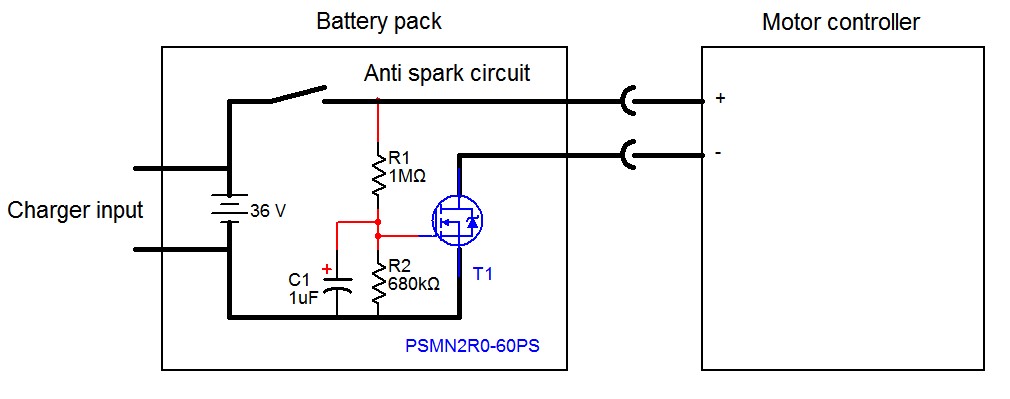avandalen
100 W
Here is an anti spark circuit which works automatically. Just simply insert the connector, no sparks will occur. The anti spark circuit can be built into the battery pack or into the motor controller.



Read more here:
http://www.avdweb.nl/solar-bike/electronics/motor-controller.html
Read more here:
http://www.avdweb.nl/solar-bike/electronics/motor-controller.html

